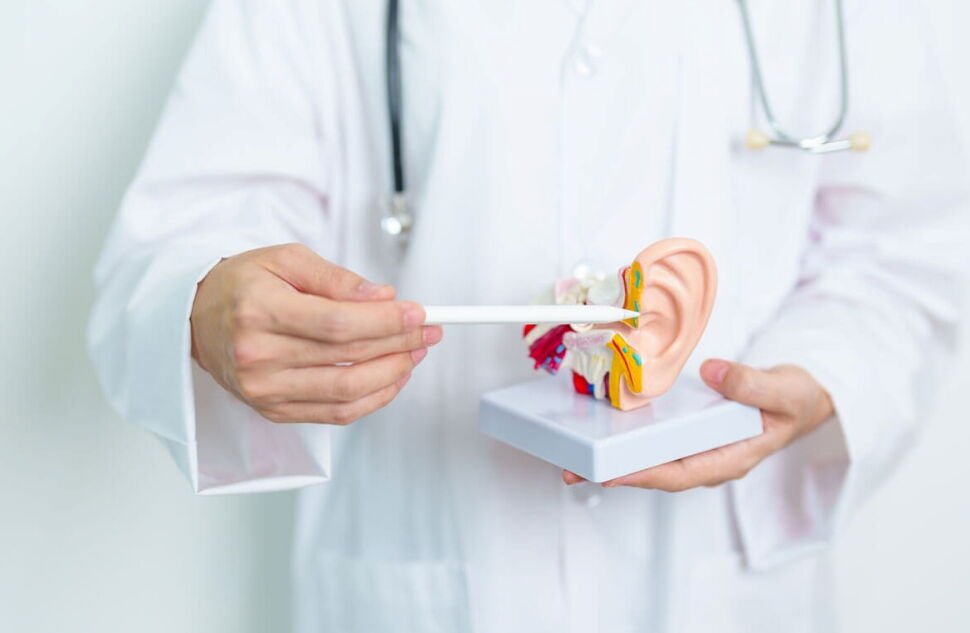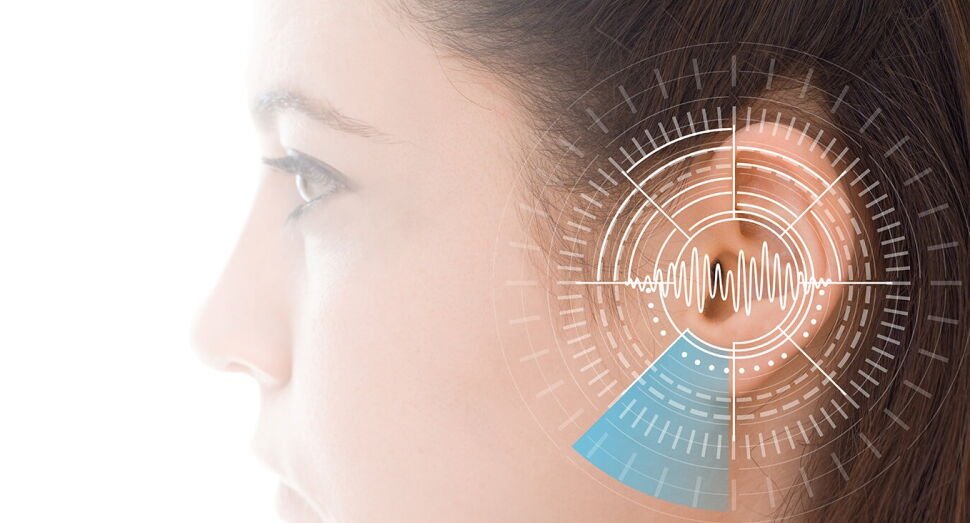Ototoxicity, the harm produced by drugs or substances to the inner ear or auditory system, worries healthcare experts. It can cause permanent hearing loss, balance difficulties, and quality of life concerns. Monitoring, educated decision-making, and patient education can reduce these risks for healthcare practitioners. This page discusses ototoxicity risk reduction with practical tips, essential concerns, and evidence-based insights.
1. Understanding Ototoxicity and Its Impact
Ototoxicity occurs when drugs or chemicals damage the structures of the inner ear, affecting both hearing and balance. The most common ototoxic drugs include:
- Aminoglycoside antibiotics (e.g., gentamicin, tobramycin)
- Loop diuretics (e.g., furosemide, bumetanide)
- Chemotherapy agents (e.g., cisplatin, carboplatin)
- Non-steroidal anti-inflammatory drugs (NSAIDs) (e.g., aspirin, ibuprofen)
The effects can range from mild tinnitus (ringing in the ears) to profound sensorineural hearing loss. As more patients undergo treatments involving these medications, especially for cancer or critical infections, the risk of ototoxicity remains high. Early detection and prevention are essential to preventing long-term damage.
2. Identifying Patients at High Risk
Certain patient populations are more vulnerable to the effects of ototoxicity. Identifying these individuals early allows for tailored interventions to minimize risk.
High-Risk Groups Include:
| Risk Factor | Explanation |
|---|---|
| Age | Children and older adults are more susceptible due to developing or aging auditory systems. |
| Pre-existing hearing loss | Patients with existing hearing issues are more prone to additional auditory damage from ototoxic drugs. |
| Pre-existing renal dysfunction | Impaired kidney function can affect drug clearance, increasing the risk of ototoxicity. |
| High drug dosages or prolonged use | Higher doses or extended treatment periods of ototoxic drugs increase the likelihood of auditory damage. |
| Concurrent use of multiple ototoxic drugs | Using more than one ototoxic drug increases cumulative toxicity risks. |
By assessing these factors, healthcare providers can initiate early interventions or choose alternative therapies that minimize ototoxicity risks.
3. Monitoring for Ototoxicity Early and Regularly
Routine auditory monitoring is essential for patients receiving ototoxic medications, as early intervention can help prevent severe damage. Two key components of monitoring include:
3.1 Audiological Assessments
- Baseline hearing tests before the initiation of treatment to determine the patient’s normal hearing threshold.
- Frequent follow-up audiograms during and after treatment to track any decline in hearing function.
- Tympanometry and otoacoustic emissions tests to monitor ear function and balance.
3.2 Drug Monitoring
Regularly monitor drug levels, particularly for medications with a narrow therapeutic index, such as aminoglycosides and cisplatin. For instance:
- Cisplatin: Trough plasma levels should be measured to avoid toxic concentrations.
- Aminoglycosides: Peak and trough serum levels should be routinely checked to avoid excessive accumulation in the cochlea.
A proactive approach to monitoring can detect ototoxicity early, enabling timely dose adjustments or discontinuation of the offending drug.
4. Risk Mitigation Strategies
Several strategies can help minimize the risk of ototoxicity in patients, including:

4.1 Dose Reduction
Lowering the dose of ototoxic drugs, when feasible, can significantly reduce the risk of hearing damage. In cases where dose adjustments are necessary, it is crucial to maintain therapeutic efficacy while limiting exposure to the ototoxic agent.
4.2 Drug Switching or Substitution
When possible, consider substituting ototoxic drugs with less harmful alternatives. For example, use beta-lactam antibiotics instead of aminoglycosides for infections if renal function allows.
4.3 Protective Agents
There is emerging evidence supporting the use of otoprotective agents that can help reduce the damage caused by ototoxic drugs. For example:
- N-acetylcysteine (NAC) has been investigated as a potential otoprotective agent in chemotherapy-induced ototoxicity.
- D-methionine may reduce cisplatin-induced ototoxicity, although more research is needed.
4.4 Hydration and Kidney Support
Maintaining optimal hydration and renal function can reduce the accumulation of drugs like cisplatin and aminoglycosides in the inner ear, which could prevent ototoxicity.
5. Patient Education and Communication
Ensuring that patients are aware of the potential risks of ototoxicity is critical for minimizing harm. Effective patient education includes:
- Discussing the risks: Informing patients about the potential side effects of their medications, including the possibility of hearing loss or balance problems.
- Encouraging self-monitoring: Teaching patients how to identify early signs of hearing loss (e.g., ringing in the ears, muffled hearing) and balance problems.
- Collaborating with multidisciplinary teams: Involving audiologists, nephrologists, and oncologists in patient care to address the complexities of ototoxicity.
Empowered patients who understand the risks are more likely to adhere to their treatment regimen and communicate early symptoms of ototoxicity.
6. Emerging Research and Technologies
Research into the prevention and management of ototoxicity is ongoing. Advances in genomics, pharmacology, and hearing protection technologies offer promising avenues for minimizing ototoxicity risks.
6.1 Pharmacogenomics
Genetic testing may help identify patients who are genetically predisposed to ototoxicity. For example, variations in certain genes (e.g., SLC22A2 and MTHFR) may influence how the body processes ototoxic drugs. Personalized medicine based on these genetic markers could reduce the risk for susceptible patients.
6.2 Innovative Drug Formulations
Researchers are working on developing new formulations of ototoxic drugs that are less harmful to the ear. Nanotechnology, for instance, has been explored to enhance drug delivery while protecting auditory structures.
7. The Role of Healthcare Providers in Ototoxicity Risk Management
Healthcare providers, particularly those involved in prescribing ototoxic medications, play a crucial role in minimizing risks through:
- Informed decision-making: Choosing the most appropriate drug based on the patient’s risk profile.
- Ongoing education: Staying informed about the latest research on ototoxicity and emerging alternatives to traditional therapies.
- Patient advocacy: Ensuring patients are well-informed and actively involved in the management of their care.
Healthcare providers must also collaborate with audiologists, pharmacists, and other specialists to create a comprehensive care plan that addresses the various facets of ototoxicity management.
Frequently Asked Questions
What is ototoxicity?
Ototoxicity refers to damage to the inner ear caused by drugs or chemicals. It can lead to hearing loss or balance issues.
Which drugs cause ototoxicity?
Common ototoxic drugs include aminoglycosides, loop diuretics, chemotherapy agents, and NSAIDs.
How can ototoxicity be prevented?
Ototoxicity can be minimized through regular monitoring, dose adjustments, drug substitutions, and patient education.
Who is at higher risk of ototoxicity?
High-risk patients include those with pre-existing hearing loss, kidney dysfunction, or those using high doses of ototoxic drugs.
What monitoring is needed for ototoxicity?
Audiological assessments and routine drug level checks are essential for detecting early signs of ototoxicity.







1 comment
Hofstra University offers a diverse range of majors that cater to various interests and career paths. From business to the arts, their programs provide hands-on experience and a robust academic framework to prepare students for the future.
Comments are closed.